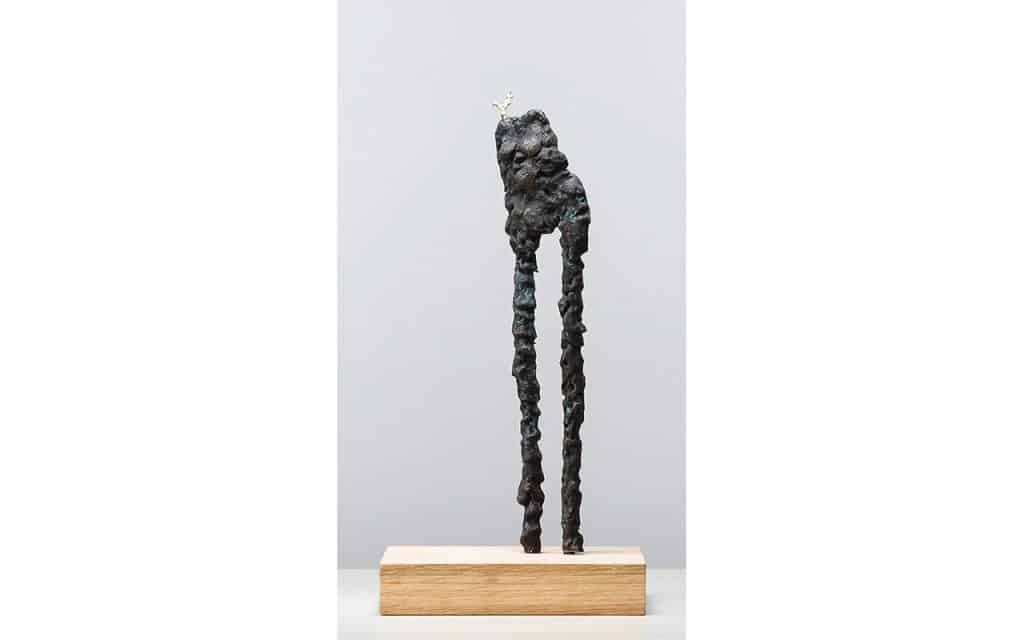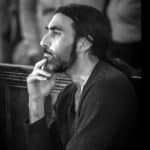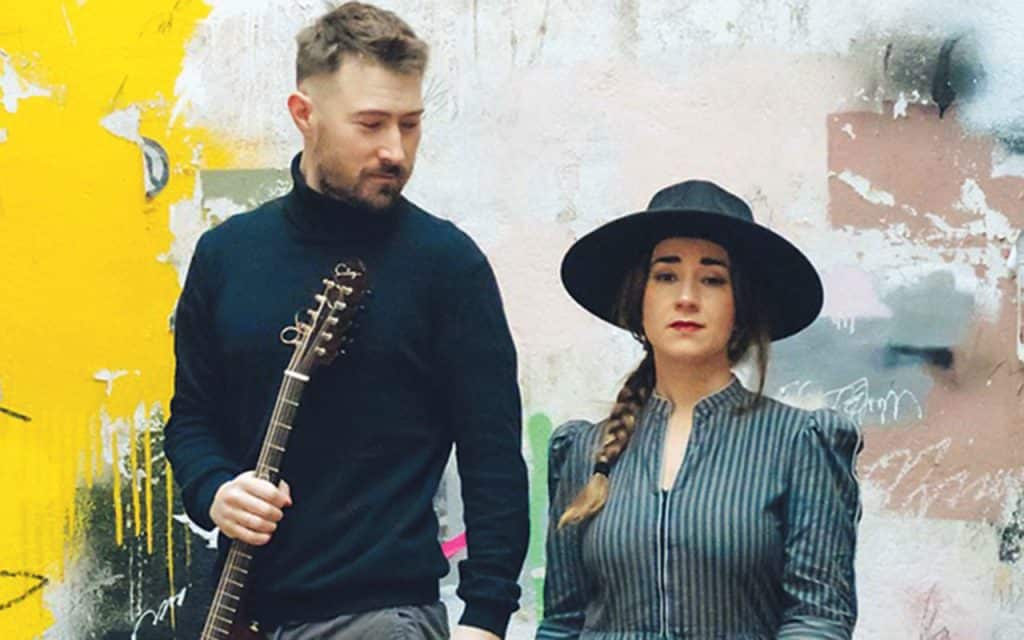Spring in West Cork means many things, not least the beginning of the exhibition season for many galleries. In Clonakilty, on March 27, 28 and 29, three exhibitions opened, either coinciding with or programmed for the Clonakilty Arts and Minds pop-up festival. The opening of ‘The Secret Country’ by TP MacCurtain and Mark Doherty at Geata Arts, ‘Core’ by Helle Helsner at O’Connell Gallery, and ‘By the Light of the Burning Candle,’ by Emma Scully at the Loft Gallery, marks a rare moment when dedicated exhibitions in otherwise shop-style spaces (with the exception of Geata Arts), coincide.
Landscape, social history, material and mythology dominate the concerns of all three exhibitions, albeit in very different ways. I will largely concentrate here on the work of Danish-Irish sculptor, Helle Helsner, which comprises ‘Core,’ before pivoting to briefly reflect on the brooding mythological images of MacCurtain and Doherty, and the surreal juxtapositions of Scully.

Helle Helsner’s work in bronze is instantly recognisable: the spindly, shadowy figures, cast using pre-historic processes, echo the haunting forms of the great Swiss sculptor, Alberto Giacometti. Like Giacometti, Helsner is concerned with primal expression and metaphysical reach; unlike him, she is predominantly concerned with the feminine aspect, with her and her material’s grounding in the landscape, and its attendant social history.
‘Core,’ beautifully curated by Stephen O’Connell, is the result of Helsner’s immersion in the disused mining landscape of Allihies. Helsner explained at the opening to the exhibition that her Allihies project was born of a desire to both explore the origins of her materials (bronze being composed of copper and tin), and the impact of their mining, both on the physical and social landscape.
The mixed media drawings and bronze figures forged out of this immersion began with a process of research and photography around the old Allihies mines, which flowed into a period of drawing in the studio. Helsner relates that, “drawing is how I make sense of the world.” When she draws, she uses her non-dominant left hand to better “access the subconscious,” creating, in the words of Catherine Fehily (former head of the Crawford College), who opened the exhibition, “a sense of border crossing, of incongruous juxtapositions, where unexpected things collide.”
Both figures and drawings are filled with an open-ended curiosity. One always gets the feeling of opening rather than closing, as forms tease, in Fehily’s words “the cusp between figuration and abstraction.” Helsner describes her drawing process as a form of intuitive interior and exterior mapping. She relates how an old photograph of a weathered woman pounding ore, became a catalyst for recurring figure-like silhouettes through the series. Turned another way those silhouettes could just as easily read as animal skulls (a preoccupation of Helsner’s), an image of which meanders out of the drawing, ’Bléin Mná.’ The association engenders a polysemous double-act, underscoring both the interconnectedness of the landscape and the harsh realities faced by the community which once mined it.
From drawing, Helsner’s process flows into sculpture. In works such as ‘Cailleach’ we find the artist’s sculptural endeavour largely removed (but for its materiality) from the drawing-as-mapping Allihies project. The long-legged, yet truncated figures, with the merest suggestion of flattened breasts on the torso, are decidedly female. Wire armature pokes intriguingly out of the top of many, like the meandering lines of Helsner’s drawings, or like tree branches, absent from the landscape. Such forms have long haunted Helsner’s work and, here, transcend concerns of social impoverishment, stoicism and temporality. This is really where we get to the ‘core,’ where we hover on that intangible ‘something,’ and that is where words fall away.
In ‘A Secret Country’ the paintings of TP MacCurtain and the mono-prints of Mark Doherty explore a darker, more figurative mythological world. At times Bruegelesque, MacCurtain’s paintings evoke púcaí, liminal shape-changers, which stalk the Irish landscape, bringing its inhabitants either good or bad luck. The dark, fiery paintings of MacCurtain are offset by the whimsical lines of Doherty’s mono-prints. Though exploring similar themes, the prints are lighter; they float where MacCurtain’s paintings smoulder. ‘A Secret Country,’ is a fitting exhibition to open Geata Arts’ small exhibition space, a welcome addition to Clonakilty’s cultural landscape.
‘By the Light of the Burning Candle’ marks Emma Scully’s solo debut at The Loft Gallery. Whilst Scully’s themes resonate with those of MacCurtain and Doherty, her treatment across various media engages in a more metaphor-driven surreality, reminiscent (in her etchings and paintings) of the playful metamorphoses of Paul Harbutt and Phillip Guston. Scully’s etching, ’Dreamcatcher,’ shows hands attached to hairy, plant-like stalks which emerge from a pot, whilst another etching shows a disembodied arm sitting on a chair. Her photograph of a female figure crouched in ‘child pose’ in a river is more Baroque. Only the figure’s back is visible in an otherwise dark riverscape, suggesting a moment ‘between worlds.’
Rainer Maria Rilke once wrote of the “news which is always arriving out of silence.” The works from the exhibitions discussed are welcome news from ‘a secret country;’the type of ‘news’ that energises, that brings us closer to the mystery and joy of being.



